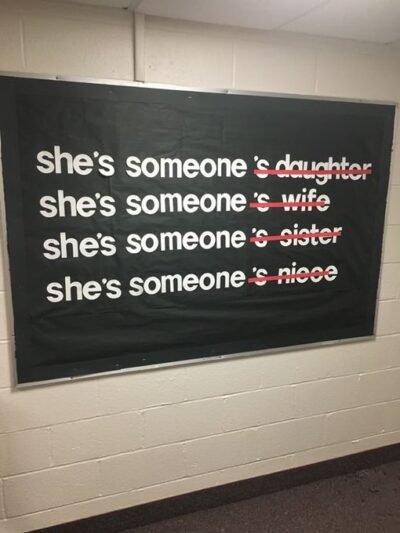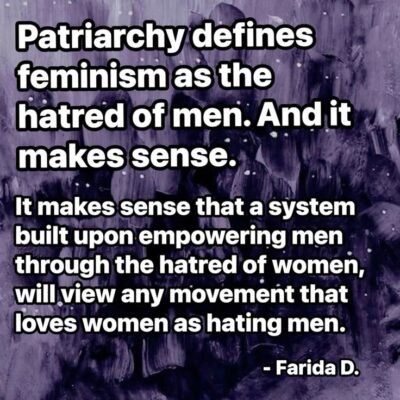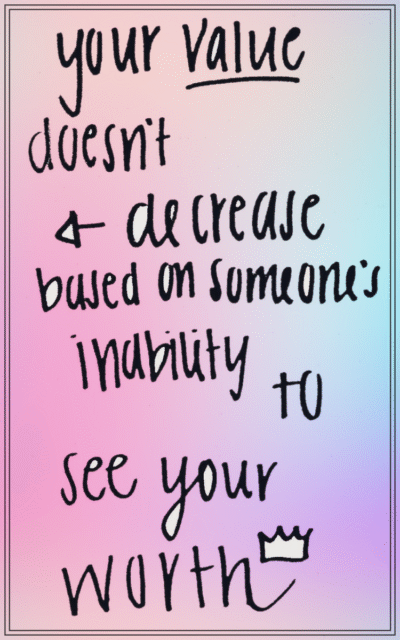These systems and beliefs shape how society treats women and girls, often reinforcing oppression, inequality, and violence. While they overlap, each

These systems and beliefs shape how society treats women and girls, often reinforcing oppression, inequality, and violence. While they overlap, each has distinct characteristics.
1. Misogyny – The Hatred and Contempt for Women
Misogyny is more than just a dislike of women—it is a deeply embedded hatred, hostility, and resentment toward women and femininity. It manifests in:
- Punishing women for existing outside male control (e.g., attacking women who reject male advances).
- Demonizing female leadership (e.g., calling women “too emotional” to lead).
- Blaming women for male violence (“She provoked him,” “She should have known better”).
- Devaluing feminine traits (e.g., dismissing empathy, care, and emotional intelligence as weak).
- Weaponizing sex and reproduction (e.g., restricting reproductive rights, shaming women for sexual autonomy).
- Normalizing violence against women (e.g., excusing rape and domestic abuse as misunderstandings or deserved punishment).
Misogyny is the enforcement mechanism of patriarchy—it ensures that women who reject male-defined roles are punished. This happens when:
-
- Women refuse to conform to traditional expectations (e.g., rejecting marriage or motherhood).
- Women define themselves outside of male approval (e.g., prioritizing their own ambitions or sexuality).
- Women speak out against the ways men shape and control female identity.
Misogyny is not just an individual attitude—it is enforced through laws, culture, and institutions. When a woman resists male definitions, misogyny steps in—whether through ridicule, exclusion, violence, or suppression.
 2. Gynophobia – The Fear of Women
2. Gynophobia – The Fear of Women
Gynophobia is a deep-seated fear or aversion toward women and femininity. Unlike misogyny, which thrives on contempt, gynophobia manifests as anxiety, discomfort, or avoidance of women. It often includes:
- Avoiding or distrusting women in leadership roles (e.g., assuming women cannot make tough decisions).
- Fearing female sexuality (e.g., controlling how women dress, fearing women’s ability to attract or reject men).
- Believing women are inherently dangerous or manipulative (e.g., the “femme fatale” stereotype).
- Dismissing women’s knowledge or contributions (e.g., assuming women’s success is due to affirmative action rather than skill).
Gynophobia fuels many of the restrictive norms placed on women, especially around sex, power, and autonomy.
3. Sexism – The Systematic Discrimination Based on Sex
Sexism is the belief that one sex (usually men) is inherently superior to the other (women). It enforces strict gender roles and limits women’s opportunities. Key elements include:
- Institutionalized discrimination (e.g., gender pay gaps, limited job opportunities for women).
- Cultural expectations (e.g., women must be nurturing, men must be dominant).
- Reinforcing stereotypes (e.g., “Men are logical, women are emotional”).
- Ignoring or downplaying women’s suffering (e.g., not taking sexual violence or harassment seriously).
- Normalizing double standards (e.g., men are praised for leadership; women are called “bossy”).
Sexism is the belief system that enforces male superiority. It trains both men and women to accept a world where:
- Men are the authorities on all things—including what a woman is.
- Women who don’t fit the male-defined mold are labeled as “wrong,” “unnatural,” or “undesirable.”
- A woman’s worth is measured by how well she aligns with male expectations—beauty, obedience, fertility, and service.
Sexism ensures that women are raised not to define themselves, but to wait for men to do it for them. Sexism is baked into education, media, law, and daily interactions, making it one of the most persistent forms of gender-based oppression.
 4. Patriarchy – The System That Upholds Male Power
4. Patriarchy – The System That Upholds Male Power
Patriarchy is the social, political, and economic system that privileges men and enforces male dominance over women. Unlike misogyny or sexism (which are about attitudes and beliefs), patriarchy is about power. It functions through:
- Male control over laws and policies (e.g., men holding most positions of power).
- Economic domination (e.g., undervaluing women’s labor, keeping women financially dependent).
- Cultural conditioning (e.g., raising boys to see leadership as their right and girls to accept submission).
- Religious enforcement (e.g., teaching that men are divinely ordained to lead).
- Reinforcing male entitlement (e.g., normalizing the idea that men deserve access to women’s time, bodies, and labor).
Patriarchy is a male-centered system of power that establishes men as the default authority. In a patriarchal society:
- Men dictate laws, language, and social roles—including who is considered a woman and what being a woman means.
- Women’s identities are defined in relation to men—wife, mother, daughter, object of desire, caretaker, or servant.
- Men act as gatekeepers of womanhood, deciding who qualifies as a “real” woman based on traits that serve their interests (fertility, appearance, submission, usefulness to men).
- Religious and political institutions uphold male control over gender definitions, reinforcing the idea that men are the ultimate decision-makers about womanhood.
Patriarchy does not allow women to define themselves—it requires male permission for womanhood to exist under its terms.
Patriarchy is not just about individual men—it is a system that benefits men as a group while keeping women as a secondary class.
Why This Matters
Every time men redefine what a woman is—whether politically, socially, or culturally—it serves male power, not women’s liberation. The ability to name ourselves, define our experiences, and set the boundaries of our existence is a fundamental right. Without it, we are not free.
These systems—misogyny, gynophobia, sexism, and patriarchy—work together to maintain male dominance and female subjugation. They dictate how women work, love, live, and survive. Recognizing these patterns helps us name the oppression, challenge it, and build a world where women are truly free.
The Numbers Do Not Lie, So Stop Asking Women to Accept Less Safety (UPDATE)
Bullies and Cowards: A Natural Alliance in the Abuse of Women and Vulnerable Adults
